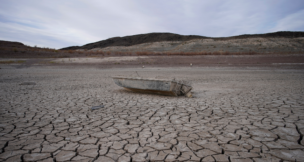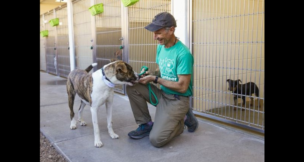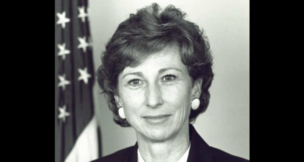DES Report Says Child Immunizations Vary Widely
Arizona Capitol Reports Staff//September 12, 2003//[read_meter]
DES Report Says Child Immunizations Vary Widely
Arizona Capitol Reports Staff//September 12, 2003//[read_meter]
From cradle to grave, the health status of Arizona communities is as different as the communities themselves.
From a wide gap in the number of 2-year-olds who are up to date on their immunizations to a range in the average age at death difference of more than 55 years between Gila Bend and Colorado City, statistics that paint contrasting profiles of health in 87 Arizona towns and cities are contained in an Arizona Department of Health report called Community Health Profile. The agency’s first-of-its-kind report is based on findings made in 2000, but DHS officials warn that the data from small communities might be statistically skewed.
“We have to be cautious when we look at small numbers,” said Emma Viera, a DHS analyst who worked on the profiles.
Oro Valley and Colorado City are two examples of where health statistics might be misleading, either because of inadequate reporting by health care providers or the characteristics of the population.
In Oro Valley, where there were 1,400 children ages 1-4 three years ago, only 11.6 per cent of 2-year-olds had been reported by physicians as immunized.
Kathy Fredrickson, office chief of the Arizona Immunization Program, said she did not know why the immunization rate was so low in the Pima County community of nearly 30,000, but it might stem from “poor reporting” by physicians.
More than half the 3,334 residents of Colorado City were younger than 15 years old in 2000, and there were seven deaths — four of them infants through 9-years-old, yielding an average age at death of 35.
Conversely, in Gila Bend and Tolleson, with much older populations, the average age at death was 90.5 and 90.6, respectively.
Inoculations
Fewer than four in 10 children aged 1-4 had received inoculations against preventable diseases in eight cities and towns in 2000, but in 21 other communities, most of them sparsely populated, more than 90 per cent of 2-year-olds had received immunizations.
Arizona law requires that children “birth through 18” be vaccinated against nine diseases, and children ages 2-5 who attend childcare centers in Maricopa County must have received two doses of hepatitis A vaccine after an outbreak of the disease five years ago.
Hepatitis A is a liver disease that can affect anyone and can occur all the way from isolated cases to widespread epidemics.
Exemptions are granted from immunization laws for medical reasons and “personal beliefs” — usually for religious reasons. Exemptions in Arizona for personal beliefs last year were 1.5 per cent for kindergartners and 2.2 per cent for 7th graders, DHS reported.
Ms. Fredrickson said communities with lower immunization rates could expect the rate of vaccine preventable diseases to be generally higher than those with high immunization rates, especially for pertussis, or whooping cough.
Scottsdale reported 31 per cent immunization of 2-year-olds, and Mesa 36.3 per cent.
DHS says Scottsdale reported “fewer than three cases” of vaccine preventable diseases, and Mesa reported five cases.
Mesa had 58 cases of hepatitis A, and Scottsdale had 15 cases.
Thirty-six per cent of toddlers had been immunized in Colorado City, where 514 children were 1-4 years old.
Twenty-two communities reported greater than 90 per cent immunization of 2-year-olds, Yuma being the largest. Others included Douglas, Pinetop-Lakeside, Casa Grande, Nogales and Chino Valley.
DHS reported the toddler immunization rate in Phoenix at 59.8 per cent, and in Tucson, it was 49 per cent.
The national average in 2000 for immunized toddlers was 74.2 per cent, and in Arizona, it was 71.3 per cent.
Ms. Fredrickson says it is difficult to keep up with immunizations because of the state’s rapid growth, which includes an average of 92,000 births per year, and “the complexity in the way health care is delivered” in the state.
Out of a 2000 population of 1.3 million, Phoenix had 28 reported cases of vaccine preventable diseases and 306 cases of Hepatitis A. Tucson, with a population of 487,000, reported 43 cases of vaccine preventable diseases and 164 cases of hepatitis A.
A total of 137 Arizona cases of vaccine preventable diseases were reported in 2000, and there were 2,256 such cases nationally.
Communities Profiled
A sampling of 11 urban and rural communities (Oro Valley, Gila Bend, St. Johns, Lake Havasu City, Prescott, Yuma, Phoenix, Tucson, Colorado City, Holbrook and Winslow) shows widely differing health profiles that, DHS said, reflect the demographics of those communities.
Of the 25,148 births in Phoenix in 2000, nearly 18 per cent were either low-birth weight babies (5.5 pounds) or pre-term births (fewer than 37 weeks gestation). DHS reported that 702 Phoenix mothers had no pre-natal care.
Of Tucson’s 11,836 births, 13 per cent were either low-birth weight babies or pre-term. DHS reported that 318 Tucson mothers received no pre-natal care.
Of the 133 births to mothers from Colorado City (their babies are usually delivered at hospitals in Utah), 15 per cent of them were to females 10-19 years old. Nearly 24 per cent of the newborns were either low-weight or pre-term.
Reporting of sexually transmitted diseases ranged from fewer than three cases in Lake Havasu City, Colorado City and Oro Valley to 1,270 in Phoenix, 382 in Yuma and 23 in Tucson.
Cases of reported HIV/AIDS in the 11 communities totaled approximately 520, of which 493 were in Phoenix and Tucson.
More than 45 per cent per cent of children 6 to 8 years old in the 11 communities had untreated tooth decay, and 15.9 per cent in the same age group were in need of urgent dental care, DHS said.
Those rates for untreated tooth decay ranged from 67 per cent in Winslow to 33 per cent in Yuma.
The DHS report said Phoenix had 902 dentists, and Colorado City and St. Johns had no dentists or mental health providers.
Reasons For Going To Hospitals
The most common reasons for hospitalization in the sampled communities were traumatic brain injuries and heart attacks. There were approximately 2,100 brain injuries, most of which were a result of motor vehicle crashes, Ms. Viera said.
There were close to 2,000 heart attacks.
The other frequent causes of hospitalizations were diabetes, asthma and stroke.
In Holbrook and Winslow, where more than one in four people was Native American, more than 5 per cent of the Native American population, or 207 people, were hospitalized for treatment of diabetes, and one death was attributed to the disease.
In contrast, Phoenix and Tucson, with combined populations of 1.8 million — nearly 500 times as large as Holbrook and Winslow — there were only 358 hospitalizations for diabetes.
Phoenix and Tucson reported 307 deaths attributable to diabetes.
Overall, the most common cause of death in the 11 sampled communities was cardiovascular disease, followed by cancer and accidents (defined as “unintentional injury).
Firearms accounted for 226 deaths in Phoenix, and there were 166 deaths listed as suicide.
The reported number of primary care physicians in the various communities ranged from one each in Colorado City, St. Johns and Gila Bend to 1,405 in Phoenix.
Ms. Viera said DHS is gathering 2001 and 2002 data for future community health profiles, which over a three-year period should enable the agency to pinpoint health trends and problems across the state. In the meantime, the department has urged the 87 communities that were studied to use the profiles for health planning and intervention.
“These profiles give communities an opportunity to discover strengths, problems and needs, DHS Director Catherine Eden said.
FYI
For more information: www.hs.state.-az.us. —

















